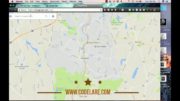Part 1: How Search Engines Work
Taken from:
Google’s Search Engine contains over an estimated 300 different core ranking factors that may or may not be divided up into thousands of sub-ranking factors.
Algorithms range from major to small depending on what Google tells us. We know that some algorithms such as, “Panda” target sitewide content related issues.
While other names such as “Penguin” target links. I would try not to get too caught up with all the updates Google releases. If you follow the steps in this tutorial, you should be able to create content and rank without needing to worry about whether or not yours or your client’s sites get hit by such things.
Page Rank. Page rank is a score from 1-10 that Google assigns its pages based on incoming links to a page. You can no longer see page rank through Google’s toolbar (they removed the ability to view it) however it still exists and is important to your overall strategy.
A basic principle is that without content you’re not going to rank for much. Content is continuing to get more and more competitive every year as niches become oversaturated with huge influxes of content. The earlier you can get into SEO, the better, the SEO niche alone is still very undersaturated on other Search Engines such as Youtube.
At the of the end of the day, traffic is traffic and the sooner you can find vulnerabilities in any niche, the better you will do.
Googles Page Rater Guidelines















Hey Chase, I have a new site 2 months old in a medium competition, currently have 12 blog post content on it, i would say the onpage is perfect, still not ranking high. What could be problem, do you think its because am still new in the niche?